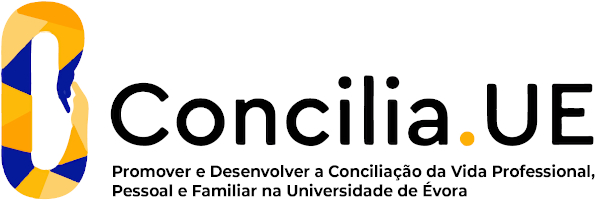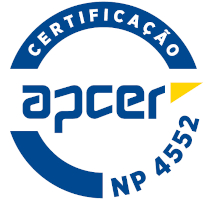2025
Econometrics II
Name: Econometrics II
Code: ECN02361L
6 ECTS
Duration: 15 weeks/156 hours
Scientific Area:
Economy
Teaching languages: Portuguese
Languages of tutoring support: Portuguese, English
Regime de Frequência: Presencial
Sustainable Development Goals
Learning Goals
Complementing the skills developed in Econometrics I, considering new models for cross-sectional data and introducing techniques and models appropriate to deal with time series and panel data.
Studying binary choice models, dynamic models, co-integration, instrumental variables and simultaneous equations.
Analysing several econometric models appropriate to describe a wide variety of models emerging from the economic theory, as well as directing the application of those models to real problems at both the macroeconomic and microeconomic level, connected to the Portuguese and/or the European reality.
Developing the ability of using econometric software and real datasets.
Developing the ability of formulation and interpretation of econometric models.
Developing critical reasoning and the ability of abstraction.
Contacting with the development of empirical economic research.
Studying binary choice models, dynamic models, co-integration, instrumental variables and simultaneous equations.
Analysing several econometric models appropriate to describe a wide variety of models emerging from the economic theory, as well as directing the application of those models to real problems at both the macroeconomic and microeconomic level, connected to the Portuguese and/or the European reality.
Developing the ability of using econometric software and real datasets.
Developing the ability of formulation and interpretation of econometric models.
Developing critical reasoning and the ability of abstraction.
Contacting with the development of empirical economic research.
Contents
BINARY CHOICE MODELS:
Linear probability model
Maximum likelihood estimation
Logit and probit models
BASIC REGRESSION ANALYSIS WITH TIME SERIES DATA:
Types of models
Trends and seasonality
Stationary and nonstationary time series.
AUTOCORRELATION AND HETEROSKEDASTICITY IN TIME SERIES REGRESSIONS:
Autocorrelation tests
Generalized least squares
Dynamically complete models
Heteroskedasticity
ARCH models
DYNAMIC MODELS AND FORECASTING:
Infinite distributed lag model
Stationarity and unit roots tests
Spurious regression and cointegration
Forecasting
PANEL DATA MODELS:
Fixed effects model
Random effects model
INSTRUMENTAL VARIABLE REGRESSION:
Motivation: Omitted variables and measurement error
Estimation
Endogeneity test and overidentifying restrictions test
SIMULTANEOUS EQUATION MODELS:
Reduced form model and structural model
The identification problem
Two stage least squares
Linear probability model
Maximum likelihood estimation
Logit and probit models
BASIC REGRESSION ANALYSIS WITH TIME SERIES DATA:
Types of models
Trends and seasonality
Stationary and nonstationary time series.
AUTOCORRELATION AND HETEROSKEDASTICITY IN TIME SERIES REGRESSIONS:
Autocorrelation tests
Generalized least squares
Dynamically complete models
Heteroskedasticity
ARCH models
DYNAMIC MODELS AND FORECASTING:
Infinite distributed lag model
Stationarity and unit roots tests
Spurious regression and cointegration
Forecasting
PANEL DATA MODELS:
Fixed effects model
Random effects model
INSTRUMENTAL VARIABLE REGRESSION:
Motivation: Omitted variables and measurement error
Estimation
Endogeneity test and overidentifying restrictions test
SIMULTANEOUS EQUATION MODELS:
Reduced form model and structural model
The identification problem
Two stage least squares
Teaching Methods
Teaching is conducted through theoretical and practical classes, with a limited number of students.
After the presentation of theoretical content, students solve exercises that help them understand the concepts and put their knowledge into practice. In the presentation of econometric models and techniques, the theory is motivated through the use of relevant examples that illustrate the application of the methods discussed.
Two main types of exercises are addressed: theoretical and practical. Practical exercises are carried out with the help of econometric software, with a strong emphasis on the use of real economic data.
In addition to regular classes, 8 contact hours are scheduled for clarifying doubts and supporting students in the development of their projects.
After the presentation of theoretical content, students solve exercises that help them understand the concepts and put their knowledge into practice. In the presentation of econometric models and techniques, the theory is motivated through the use of relevant examples that illustrate the application of the methods discussed.
Two main types of exercises are addressed: theoretical and practical. Practical exercises are carried out with the help of econometric software, with a strong emphasis on the use of real economic data.
In addition to regular classes, 8 contact hours are scheduled for clarifying doubts and supporting students in the development of their projects.
Assessment
In this course unit, the continuous assessment system is preferred, which requires attendance of at least 75% of the classes. Under this assessment system, students must complete an empirical group project (worth 30% of the final grade) and two individual written exams (worth 70%). In the individual written exams, students must obtain a minimum score of 7 out of 20.
The project encompasses several phases:1. Presentation of a proposed topic, which will be subject to comments and suggestions from the instructors; 2. Submission of a preliminary project including a descriptive analysis of the data;3. Delivery of the final version;4. Discussion.
Students may also choose the exam-based assessment regime, which offers two alternatives:
? Completion of a single final written exam at the end of the semester.
? Completion of a written exam (worth 80% of the final grade, with a minimum score of 7 out of 20) and the empirical project (worth 20%).
This second option is available to students who completed the project during the semester but failed to continue in the continuous assessment system.
The project encompasses several phases:1. Presentation of a proposed topic, which will be subject to comments and suggestions from the instructors; 2. Submission of a preliminary project including a descriptive analysis of the data;3. Delivery of the final version;4. Discussion.
Students may also choose the exam-based assessment regime, which offers two alternatives:
? Completion of a single final written exam at the end of the semester.
? Completion of a written exam (worth 80% of the final grade, with a minimum score of 7 out of 20) and the empirical project (worth 20%).
This second option is available to students who completed the project during the semester but failed to continue in the continuous assessment system.
Teaching Staff
- Fernanda Paula Mora Peixe
- Maria Aurora Murcho Galego [responsible]





















